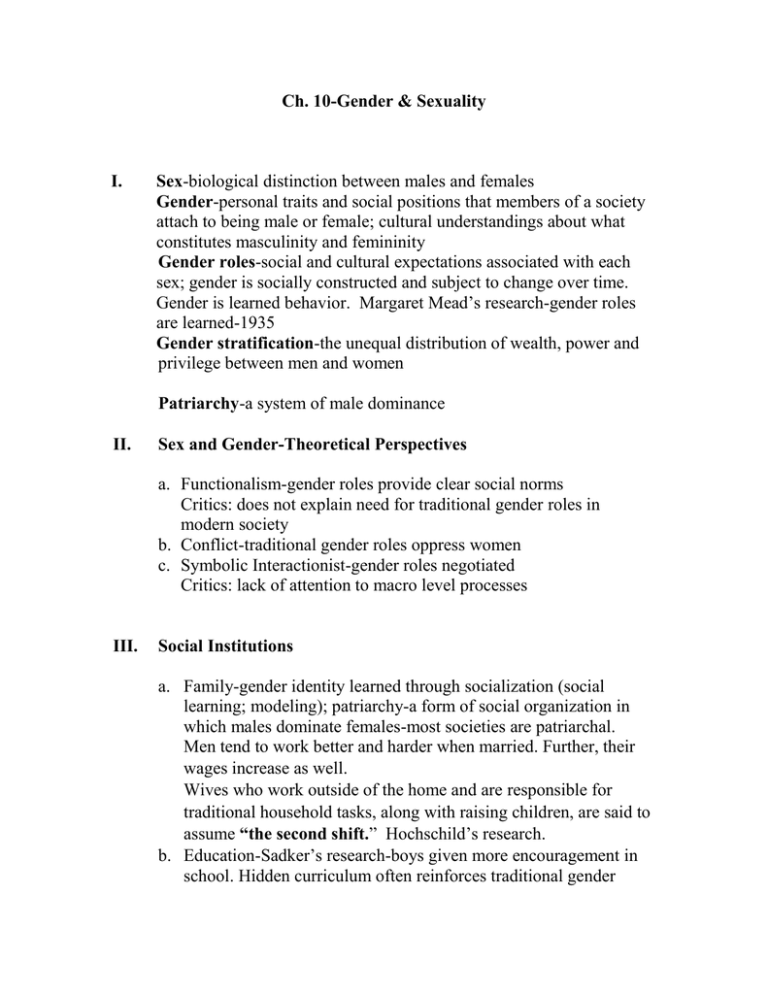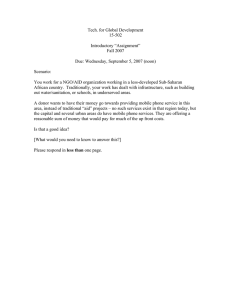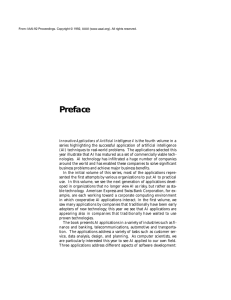Ch. 10-Gender Sexuality.doc
advertisement

Ch. 10-Gender & Sexuality I. Sex-biological distinction between males and females Gender-personal traits and social positions that members of a society attach to being male or female; cultural understandings about what constitutes masculinity and femininity Gender roles-social and cultural expectations associated with each sex; gender is socially constructed and subject to change over time. Gender is learned behavior. Margaret Mead’s research-gender roles are learned-1935 Gender stratification-the unequal distribution of wealth, power and privilege between men and women Patriarchy-a system of male dominance II. Sex and Gender-Theoretical Perspectives a. Functionalism-gender roles provide clear social norms Critics: does not explain need for traditional gender roles in modern society b. Conflict-traditional gender roles oppress women c. Symbolic Interactionist-gender roles negotiated Critics: lack of attention to macro level processes III. Social Institutions a. Family-gender identity learned through socialization (social learning; modeling); patriarchy-a form of social organization in which males dominate females-most societies are patriarchal. Men tend to work better and harder when married. Further, their wages increase as well. Wives who work outside of the home and are responsible for traditional household tasks, along with raising children, are said to assume “the second shift.” Hochschild’s research. b. Education-Sadker’s research-boys given more encouragement in school. Hidden curriculum often reinforces traditional gender 2 Gender roles. Girls less likely to take STEM or advanced computer classes, continue to take traditionally female fields of study such as nursing or education. c. Work-earnings disparity-in 2010, the median income for women was $34,700; for men it was $42,800 Feminization of labor-the rise of female labor participation in all sectors and the movement of women into jobs traditionally held by men. While women overtake men in college enrollment, they remain overrepresented in traditional female fields of study. Reasons for earning disparity: 1. type of work-pink-collar (low-wage service occupations traditionally done by females); traditional female fields of study 2. childcare-by age 40-90% of men but only 35% of women in executive positions had children 3. discrimination-glass ceiling for women vs glass escalator for men IV. Global Perspectives & The Global Women’s Movement 70% of those who live in poverty are women 2/3 of those who are illiterate are women Half the Sky-(Kristof and WuDunn) Globalization and the rise of a global economy have created or exacerbated a variety of inequalities faced by women. Traditionally, the global Women’s Movement has focused in issues such as reproductive rights, labor issues, eliminating sexual harassment and violence towards women, and the right to vote. The global women’s movement has grown dramatically in recent years because of problems created for women by globalization and because of the increased ability of those working on behalf of the movement to travel globally and to communicate with one another.


